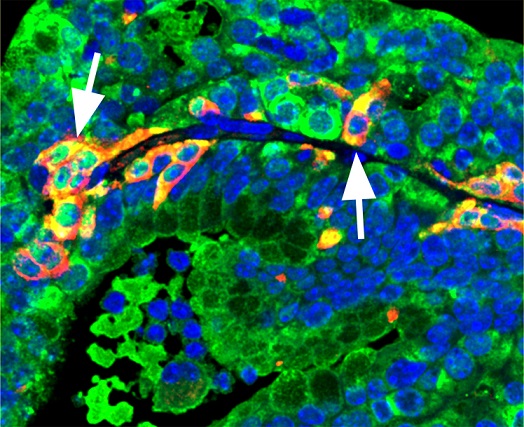Prostate Cancer
Transdifferentiation as a Mechanism of Treatment Resistance in a Mouse Model of Advanced Prostate Cancer



Posted September 19, 2017
Michael Shen, Ph.D., Columbia University Medical Center
Roxanne Toivanen, Ph.D., Columbia University Medical Center

Columbia University Medical Center

Columbia University Medical Center
While newer therapies targeting the androgen receptor (AR) such as abiraterone and enzalutamide have significantly improved outcomes for men with advanced prostate cancer (PCa), many men ultimately develop resistance to these therapies. In approximately 30% of these cases, treatment-resistance is associated with the emergence of neuroendocrine pathology features. Neuroendocrine PCa is clinically aggressive with the median survival reported as less than one year. Despite the increasing clinical importance of neuroendocrine PCa, little is known about how neuroendocrine cells arise and lead to drug-resistant, aggressive PCa.
To study this, Drs. Michael Shen and Roxanne Toivanen at Columbia University Medical Center, together with Cory Abate-Shen (also at Columbia University Medical Center) used a genetically-engineered mouse model with mutations in two genes (PTEN and P53) that are commonly found in advanced PCa patients. With support from a FY15 Idea Development Award (Shen) and a FY13 Postdoctoral Training Award (Toivanen), they showed that prostate tumors in these mice failed to respond to abiraterone treatment and often displayed accelerated growth. Furthermore, upon development of treatment resistance, these tumors frequently displayed aberrant tumor pathologies that are not dependent on androgen signaling, including tumors with neuroendocrine features. These findings could explain why some patients are not responsive to anti-androgen therapies and possibly help stratify patients that would benefit from alternative treatment strategies.
While earlier research had suggested that prostate tumors with neuroendocrine features could arise from prostate adenocarcinoma cells after therapy, the lineage-tracing approach used in their study showed that this is indeed the mechanism for treatment-related neuroendocrine PCa. In particular, this work provided definitive evidence that the tumors with neuroendocrine features arise from prostate adenocarcinoma through a poorly understood process known as transdifferentiation in which cells of one differentiated type become a distinct cell type.
Ongoing work by this group includes projects to determine which other mutations in PCa will confer a limited response to anti-androgen therapies, as well as new treatment strategies for these patients. Notably, this study also identified several candidate regulatory genes that may mediate the transdifferentiation into neuroendocrine disease after treatment, and analyses of these genes as potential novel therapeutic targets are of high priority.

Lineage-tracing in a mouse model of castration-resistant prostate cancer with regions of focal neuroendocrine differentiation.
Publication:
Zou M, Toivanen R, Mitrofanova A, et al. 2017. Transdifferentiation as a Mechanism of Treatment Resistance in a Mouse Model of Castration-resistant Prostate Cancer. Cancer Discovery. 7, 736-749
Links:
Last updated Thursday, December 5, 2024














